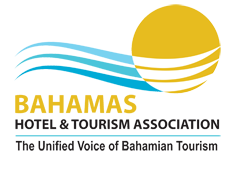Slight Occupancy Increase For Hotels
Frank Comito, the BHA’s executive vice-president, said: “Our projections are certainly positive. We’re not looking at any tremendous growth, but we’re looking at a better February than last year. Advance bookings have been strong.
“Our advance bookings are looking better than last year for February and March, but it remains to be seen.”
Although all hotel industry performance indicators, such as occupancies and room rates, are up against relatively weak 2009 comparatives, Mr Comito said the ultimate outcome for February and March would be dictated by numerous factors, including the weather in the US, given that the booking window for many visitors has narrowed to as little as one week.
However, the BHA executive vice-president told Tribune Business that the Companion Fly Free initiative, coupled with other initiatives by the Ministry of Tourism and private sector, had gained traction in the marketplace and bolstered occupancies during the recession.
“We’re hoping we can have a slight increase in average daily room rates (ADRs), that’s certainly what we’re projecting,” Mr Comito said of February/March 2010.
He added that the Bahamian hotel industry was moving back towards the performance indicators it enjoyed prior to the September 2008 stock market collapse, and “hopefully at some point later in the year we will be in that neighbourhood”.
However, while there had been “some signs of improving group activity”, Mr Comito said Atlantis and Baha Mar’s expectations that group business would not improve until 2011 were “pretty much holding true”.
The BHA’s annual industry performance survey and 2010 outlook showed just how badly the recession had affected the Bahamian resort industry, with the net profit position in 2009 continuing “to show vulnerability” for the sector and exacerbating a “three-year trend of a significant number of hoteliers reporting a net loss”.
For 2009, some 46 per cent of the 26 New Providence and Family Island resorts surveyed reported a net loss, with 50 per cent staying in the black. The remaining 4 per cent were unable to detail their profit picture when the survey was carried.
The report, covering hotels with a combined 10,663 employees and 6,866 licensed rooms, found not surprisingly that 65 per cent of properties anticipated improved revenues in 2010, a further 27 per cent anticipating they would remain flat with 2009 levels.
For 2009, some 85 per cent of resorts surveyed said revenues had declined, with 62 per cent seeing only a slight fall.
The same picture was evident on occupancy levels, with 62 per cent of resorts projecting these would increase in 2010, only 12 per cent projecting they would be down. This compared to 85 per cent of hotels seeing an occupancy drop in 2009, following on behind 78 per cent seeing an occupancy fall in 2008.
Hotel industry employment levels were expected to remain constant in 2010, according to 73 per cent of hotels surveyed, with 15 per cent anticipating an increase in staffing levels and 12 per cent a modest reduction.
And the BHA survey added: “Capital spending, which has declined during the past two years, except for major refurbishment by several hotels, is expected to see its biggest increase in three years with 31 per cent of hotels reporting a projected increase, while another 31 per cent will spend at 2009 levels. Some 33 per cent indicate capital spending will decline in 2010.”
Source: The Tribune

